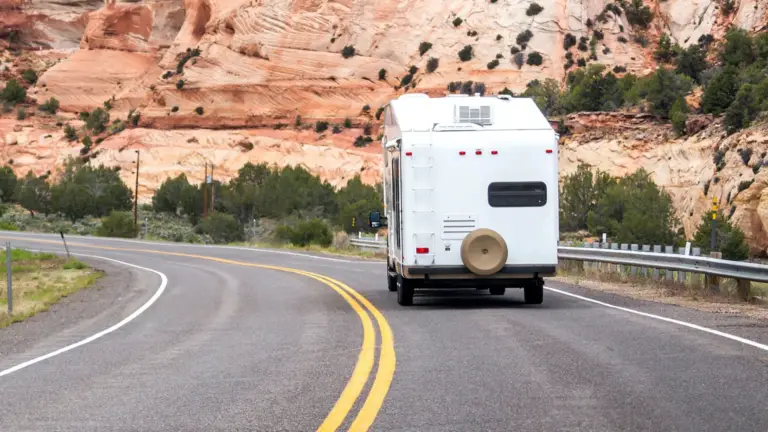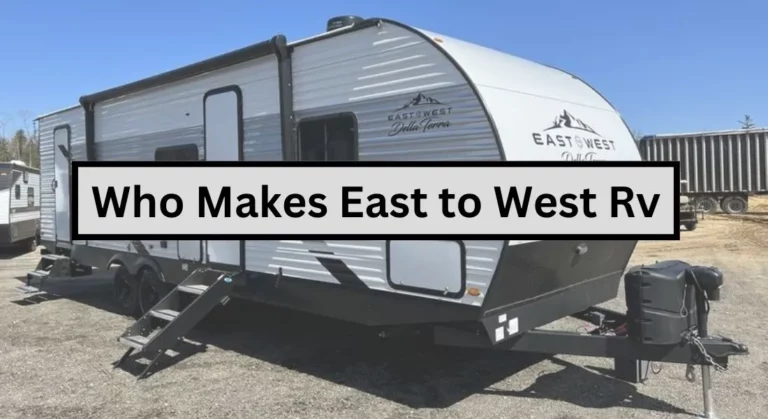Choosing the Right Cassette Toilet for Pop Up Camper
Want to know more about cassette toilet for pop up camper? When it comes to outfitting your pop-up camper for adventures on the road, one essential consideration often flies under the radar: the choice of a cassette toilet.
These compact and practical facilities can significantly enhance your camping experience. However, selecting the right cassette toilet is a decision that requires careful thought and consideration.
In this article, we will guide you through the process of choosing the ideal cassette toilet for your pop-up camper, offering practical insights and factors to keep in mind, ensuring your camping trips remain comfortable and convenient.

How does a cassette toilet work?
Understanding how a cassette toilet functions is essential for anyone on the road or seeking a portable toilet option.
Basic mechanism
The basic mechanism of a cassette toilet is ingeniously simple. It consists of two primary components: the toilet bowl and the cassette toilet holding tank.
The toilet bowl, which resembles a standard household toilet, is where users deposit waste.
Beneath the toilet bowl is the cassette tank, a portable and removable container designed to hold waste and water. When you use a cassette toilet, waste, and water from flushing are collected in the cassette holding tank.
These holding tanks are typically equipped with seals to prevent odors and leaks, ensuring a clean and sanitary experience.
To empty the tank, you simply remove it from its compartment in the RV or camper and take it to an appropriate dumping station or toilet facility.

Water management
Water management is a vital aspect of maintaining a clean and functional environment, especially in settings where resources are limited.
One key element of water management involves the handling of wastewater, particularly in contexts where traditional plumbing systems may not be available or practical
This is where the concept of a “holding tank” and the use of a “dump station” come into play.
A holding tank is a simple yet crucial component in the process of water management.
It serves as a temporary storage container for wastewater, ensuring that it doesn’t contaminate the surroundings.
This containment solution is commonly employed in recreational vehicles, boats, and other settings where conventional plumbing connections may be impractical.
When it’s time to dispose of the accumulated wastewater, a dump station provides the necessary facilities to do so safely and hygienically.
Dump stations are strategically located in various places, such as traditional RV toilet parks and campgrounds, to enable the responsible discharge of wastewater from holding tanks.

Waste containment
Unlike traditional toilets connected to sewage systems, the best cassette toilets are self-contained units designed to securely store waste until disposal at a dump station.
The waste containment aspect of a cassette toilet involves a specially designed cassette tank that serves as the repository for human waste and toilet paper.
This holding tank is sealed tightly to prevent odors and leaks, ensuring a hygienic environment within your RV or camper.
It allows you to enjoy the convenience of a composting toilet in your RV bathroom or camper without the need for complex plumbing.
Portability and convenience
Unlike traditional RV toilets that rely on a fixed plumbing system, camper cassette toilets are self-contained units designed for mobility.
This flexibility allows you to set up your portable camping toilet where you need it most, enhancing your convenience when nature calls.
The waste cassette can be removed and emptied at a designated dump station or sanitary facility, simplifying the disposal process.
The holding tank, a vital component of the cassette toilet, is where waste is stored. The cassette toilet’s holding tank is easily detachable.
This ease of use minimizes the hassle associated with traditional sewage systems, making it an attractive choice for those seeking a hassle-free sanitation solution.

Differences between cassette toilets and portable toilets
Two commonly used options are cassette toilets and portable toilets. In this article, we will explore the distinctions between these two types of toilets, highlighting their key features and practical considerations.
Design and functionality
Cassette toilet. Cassette toilets are self-contained toilet systems typically installed in recreational vehicles (RVs) and campervans.
They consist of a permanent toilet fixture within the vehicle a removable wastewater holding tank with a hidden toilet paper roll holder in the base, commonly referred to as the cassette.
These toilets require a connection to an RV’s water supply for flushing and a separate wastewater holding tank for storage
Portable toilet. Portable camping toilets, on the other hand, are standalone units that do not require any connection to plumbing or vehicles.
They come in various sizes and designs but generally consist of a toilet seat and a waste holding tank.

Mobility and versatility
Cassette toilet. Cassette toilets are ideal for RV and campervan owners who have a dedicated onboard toilet facility.
While they offer the convenience of a built-in toilet, their mobility is limited to the vehicle they are installed in.
This makes them less suitable for users who need an RV toilet solution outside the vehicle.
Portable toilet. Portable toilets are designed for maximum mobility. They can be easily transported to various locations and are not limited to a specific vehicle.
Capacity and maintenance
Cassette toilet. The capacity of cassette toilets is limited by the size of the cassette toilet holding tank, which typically ranges from 5 to 20 gallons with a hidden toilet paper roll holder in the base.
Maintenance involves cleaning and sanitizing the cassette tank after each use, which can be done at designated disposal sites or an RV dump station.
Portable toilet. Portable toilets come in various sizes, and their waste-holding tanks also vary in capacity.
A smaller portable toilet may require more frequent emptying, while larger ones can hold waste for longer periods.
Maintenance involves emptying the waste holding tank, rinsing it, and adding chemical deodorizers or disinfectants to control odors and bacteria growth.

Pros of a cassette toilet
- Portability. The Best Cassette toilets are highly portable, making them ideal for RVs, campers, and even boats.
- Easy installation. Installing a cassette toilet is a straightforward process, requiring minimal plumbing and construction.
- No water connection needed. Unlike traditional toilets that require a constant water supply, cassette toilets operate without the need for a direct water connection.
- Waste management. Cassette toilets come equipped with a removable waste holding tank, which can be easily emptied at designated disposal stations.
- Cost-effective. In comparison to installing a traditional composting toilet and sewage system, cassette toilets are a cost-effective alternative.
- Water conservation. Since cassette toilets don’t rely on a continuous water supply, they contribute to water conservation efforts.
- Independence. Having a cassette toilet on board provides a level of independence and self-sufficiency, allowing you to venture off-grid without worrying about access to traditional toilet sanitation facilities.
Cons of a cassette toilet
- Limited capacity. One of the primary drawbacks of a cassette toilet is its limited holding tank capacity.
- Emptying hassles. Emptying a cassette toilet’s holding tank can be a less-than-pleasant experience.
- Size and space. Cassette toilets, due to their design, can be smaller and less comfortable to use compared to residential toilets.
- Maintenance requirements. Cassette toilets require regular toilet maintenance, including cleaning and sanitizing the holding tank.
- Cost. Initially, cassette toilets can be more expensive than alternative traditional RV toilet options.
- Environmental impact. Some individuals may be concerned about the environmental impact of cassette toilets, as they require chemical additives to break down waste, which can be harmful to the ecosystem when not disposed of properly.
Features of cassette toilets
We will explore the essential elements to consider when selecting an RV cassette toilet tank, focusing on practicality and functionality rather than unnecessary frills or fancy embellishments.
Tank capacity
Different models come with varying tank sizes, typically measured in liters or gallons. Smaller holding tanks are suitable for occasional use or shorter trips, while larger tanks are preferable for extended journeys or when multiple people will be using the cartridge toilet.
It’s essential to assess your specific needs to determine the appropriate fresh water tank capacity for your cassette toilet.
Keep in mind that a balance between size and convenience is key.
A smaller tank may be easier to handle but may require more frequent emptying, while a larger tank can hold more waste but may be heavier to transport.

Flush mechanisms
The flush mechanism determines how efficiently the toilet evacuates waste and cleans the bowl. There are generally two main types to look for:
Gravity Flush: This straightforward system relies on the force of gravity to move water from the cassette’s holding tank into the bowl.
Electric Flush: Electric flush mechanisms use a motorized pump to create a powerful flush, often requiring less water compared to gravity flush systems.
Ease of installation
Look for an RV cassette toilet that comes with clear and concise installation instructions. These should be user-friendly, enabling even those with limited DIY experience to set up the regular RV toilet without a hitch.
A well-designed system will have intuitive components that fit together seamlessly such as a hidden toilet paper roll holder in the base, reducing the time and effort required for installation.
Furthermore, some cassette toilets offer a modular design, which simplifies the installation process even further.
Portability and weight
Look for a cassette toilet that is compact and designed for hassle-free transportation such as Thetford cassette toilet. Consider the dimensions and whether it can fit comfortably in your vehicle or camping setup.
Portability ensures that you can use the toilet wherever your adventures take you without inconvenience.
Pay attention to the weight of the RV cassette toilet. Lightweight models are typically easier to carry and handle, which can be especially important if you’re on the move frequently.
Ensure that the weight is manageable for your needs, as this will impact your overall experience with the toilet.

Odor control and ventilation
One of the primary concerns when it comes to cassette toilets is odor control. Nobody wants unpleasant odors lingering in their recreational vehicle or camping space. Look for cassette toilets equipped with effective odor control mechanisms, Thetford cassette toilet can be a good choice.
Adequate airflow can help dissipate odors and maintain a more comfortable environment.
Some cassette toilets come with built-in ventilation systems that ensure a constant exchange of air, minimizing the chances of unpleasant odors escaping into your living or camping space.
Durability and build quality
Look for the best cassette toilets constructed from high-quality materials that resist wear and tear.
Robust plastics and corrosion-resistant components are often indicative of a toilet’s ability to endure the elements and regular use, unlike a bucket toilet.
A well-constructed cassette toilet should offer a stable and comfortable seat, ensuring a hassle-free experience for users.

Cassette toilet chemicals
We will explore the essential aspects of toilet chemicals, their functions, and how to use them effectively.
Selecting the right chemicals
Selecting the right chemicals for a cassette toilet is crucial for a pleasant outdoor experience.
Consider factors like the type of chemical (biological or chemical), odor control, compatibility with your RV toilet model, environmental impact, ease of use, and storage.
These considerations will help you make an informed choice that suits your needs and ensures a hassle-free experience.
Chemical-free options
One such choice is composting toilets. Composting toilets use the natural process of decomposition to turn waste into a rich, earthy material that can be safely disposed of or even used as fertilizer.
Another chemical-free option is the use of enzyme-based additives. While not traditional chemicals, these additives harness the power of beneficial enzymes to break down waste and control odors naturally.

Proper chemical usage
Proper usage of toilet chemicals is essential for a clean and odor-free experience, involving following manufacturer instructions, using the correct dosage, applying chemicals regularly after each tank emptying, diluting if recommended, sticking to one brand, disposing of waste properly at designated areas, and occasionally rinsing tanks to prevent buildup.
Effective odor control
Chemicals of cassette toilets work by breaking down organic matter within the waste tank, which is often the root cause of foul odors.
Some toilet chemicals contain fragrances that provide a pleasant and fresh scent, further masking any remaining odors.
This dual-action approach not only controls odors but also leaves the toilet area smelling more agreeable.
Eco-friendly chemical alternatives
These alternatives often utilize biodegradable ingredients that break down waste naturally, reducing the need for harsh chemicals that can harm ecosystems.
Additionally, many eco-friendly options are fragrance-free or use natural, non-toxic scents to maintain a pleasant environment without the overpowering artificial fragrances found in some conventional products.

Cassette toilet waste management
We will explore the practical steps and considerations involved in cassette toilet waste management, helping you maintain a clean and odor-free environment without the need for elaborate descriptions or comparisons.
How much waste does a cassette toilet hold?
The most common cassette toilet sizes range from 18 to 75 liters (5 to 20 gallons) for the waste tank. Some larger models may have even greater capacity.
The larger the waste tank, the longer you can go before needing to empty it.
Regularly monitoring the waste level is advisable to prevent overfilling, which can lead to unpleasant odors and potential spillage.
How often do you need to empty a cassette toilet?
For occasional or light usage, such as in smaller recreational vehicles, you might find that emptying the cassette every few days or even once a week suffices.
On the other hand, for heavy usage, such as during extended trips or with more occupants, you may need to empty it more frequently, potentially every day or every other day.
How do you dump cassette toilets?
Emptying a cassette toilet involves removing the waste cassette, emptying it at a designated RV dump station, rinsing it if available, and securely replacing it, all while following local regulations for proper waste disposal.
Where can you dump the “contents” of a cassette toilet?
Many campgrounds and RV parks offer a dedicated dump station. These are convenient locations equipped with the necessary facilities for emptying your cassette toilet.
It’s a straightforward and safe choice, ensuring proper disposal while you’re on the road.
In some areas, you may be able to dispose of cassette toilet contents in public restrooms or sanitation facilities designated for waste disposal.
Sani-dumps, or dump stations specifically designed for RV waste, can be found in some locations.

FAQ
How do you use a cassette toilet in a pop up camper?
First, ensure your camper is level and well-ventilated.
Check that the RV toilet is clean and the waste tank is empty. When you need to use it, lift the lid and sit down.
Most cassette toilets have a foot pump for flushing, so use it before and after use.
Afterward, dispose of waste in a suitable location following local regulations.
Regularly clean and maintain the cartridge toilet to keep it in good condition.
When you’re done, securely close the toilet lid and ensure it’s properly secured during travel.
What is a cassette toilet in a pop up camper?
A cassette toilet in a pop-up camper is a portable toilet system. It includes a toilet bowl and a removable waste cassette, making it suitable for smaller campers with limited space.
When full, the cassette is removed for waste disposal at designated sites, providing a convenient sanitation solution for camping.
Are cassette toilets worth it?
Cassette toilets can be a practical choice for mobile homes and boats due to their portability and water efficiency.
However, they have limited waste capacity and require regular toilet maintenance and waste disposal. Whether they’re worth it depends on your specific needs and willingness to manage these limitations.
Can you put a toilet in a pop up camper?
Yes, it’s possible to install an RV toilet in a pop-up camper, but it depends on the specific model and your preferences.
Some pop-up campers come equipped with built-in toilets or the option to add one during customization.
Conclusion
In conclusion, selecting the appropriate cassette toilet for your pop-up camper is a crucial decision that affects your overall camping experience.
By considering factors such as size, capacity, ease of maintenance, and installation compatibility, you can make an informed choice that suits your specific needs.
The right choice ensures that you can enjoy the great outdoors without unnecessary complications, making your camping trips more enjoyable and hassle-free.







